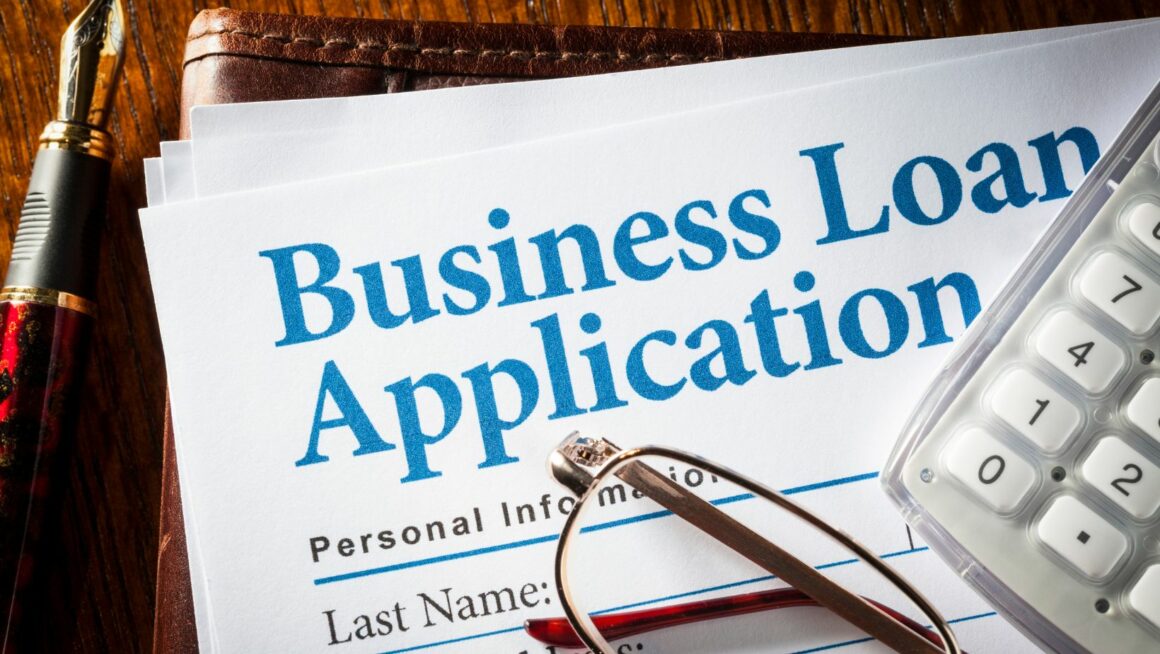 Crafting a compelling business proposal presentation is a critical step for entrepreneurs and businesses looking to secure new clients, partners, or investors. It’s not just about showcasing what your business can do; it’s about convincing your audience that your solution is the one they’ve been searching for. With the right approach, a business proposal presentation can transform a potential lead into a loyal customer or investor.
Crafting a compelling business proposal presentation is a critical step for entrepreneurs and businesses looking to secure new clients, partners, or investors. It’s not just about showcasing what your business can do; it’s about convincing your audience that your solution is the one they’ve been searching for. With the right approach, a business proposal presentation can transform a potential lead into a loyal customer or investor.
The key to a successful presentation lies in understanding your audience’s needs and expectations and tailoring your message to meet those precisely. From the design of your slides to the clarity of your message, every element plays a pivotal role in capturing and maintaining your audience’s attention.
Business Proposal Presentation
What Is a Business Proposal Presentation?
 A business proposal presentation refers to the visual and verbal effort to persuade an audience towards a specific business arrangement, solution, or partnership. This type of presentation combines data, storytelling, and persuasive strategies to showcase a business’s value proposition effectively. Key elements include an overview of the service or product offered, the market need, the business model, the team behind the project, and the financials essential for the proposal’s success. Typically, it leverages tools like PowerPoint, Prezi, or similar software to create a cohesive and compelling narrative that illustrates potential benefits for the audience, whether they’re clients, partners, or investors.
A business proposal presentation refers to the visual and verbal effort to persuade an audience towards a specific business arrangement, solution, or partnership. This type of presentation combines data, storytelling, and persuasive strategies to showcase a business’s value proposition effectively. Key elements include an overview of the service or product offered, the market need, the business model, the team behind the project, and the financials essential for the proposal’s success. Typically, it leverages tools like PowerPoint, Prezi, or similar software to create a cohesive and compelling narrative that illustrates potential benefits for the audience, whether they’re clients, partners, or investors.
Importance in Today’s Business World
 In today’s competitive business environment, a well-crafted business proposal presentation is more important than ever. It stands as a critical communication tool that bridges the gap between a business’s offerings and its audience’s needs. These presentations serve multiple purposes: they can attract investment, secure client contracts, form partnerships, or convince stakeholders of the viability of a new project.
In today’s competitive business environment, a well-crafted business proposal presentation is more important than ever. It stands as a critical communication tool that bridges the gap between a business’s offerings and its audience’s needs. These presentations serve multiple purposes: they can attract investment, secure client contracts, form partnerships, or convince stakeholders of the viability of a new project.
A persuasive presentation demonstrates the business’s understanding of the market, highlighting its unique selling point (USP) and differentiating it from competitors. It’s an opportunity to engage directly with potential investors or clients, providing a website to answer questions and address concerns in real-time. The ability to adapt and tailor presentations to specific audiences boosts the likelihood of achieving desired outcomes, making it an indispensable aspect of modern business strategy.
Key Elements of a Successful Business Proposal Presentation
Executive Summary
 The executive summary introduces the core of the business proposal presentation, succinctly highlighting the main points that will be detailed throughout the presentation. It serves as a snapshot, offering the audience a quick understanding of what the business stands for, the primary objectives of the proposal, and how it intends to achieve its goals. This section captures the essence of the proposal, ensuring the audience grasps the significance and potential impact of the business idea from the beginning.
The executive summary introduces the core of the business proposal presentation, succinctly highlighting the main points that will be detailed throughout the presentation. It serves as a snapshot, offering the audience a quick understanding of what the business stands for, the primary objectives of the proposal, and how it intends to achieve its goals. This section captures the essence of the proposal, ensuring the audience grasps the significance and potential impact of the business idea from the beginning.
Problem Statement and Solution
 Identifying a clear problem statement is critical, as it lays the foundation for the entire business proposal presentation. This segment must articulate the specific issue or need that the business aims to address, backed by relevant data or research to underscore its importance. Following the problem statement, the presentation should seamlessly transition into the proposed solution, detailing how the business’s product or service effectively solves the identified problem. This part of the presentation connects the audience’s needs with the proposed offering, making a compelling case for why the solution is both unique and necessary.
Identifying a clear problem statement is critical, as it lays the foundation for the entire business proposal presentation. This segment must articulate the specific issue or need that the business aims to address, backed by relevant data or research to underscore its importance. Following the problem statement, the presentation should seamlessly transition into the proposed solution, detailing how the business’s product or service effectively solves the identified problem. This part of the presentation connects the audience’s needs with the proposed offering, making a compelling case for why the solution is both unique and necessary.
Business Model and Value Proposition
 Explaining the business model and value proposition is essential in a business proposal presentation. This section outlines how the company plans to operate and generate revenue, presenting a clear picture of the business structure, revenue streams, and key resources. The value proposition is closely tied to this, emphasizing what makes the business’s offering valuable and different from competitors. It answers the question of why customers would choose this particular solution, highlighting benefits such as cost-effectiveness, innovation, or superior customer service.
Explaining the business model and value proposition is essential in a business proposal presentation. This section outlines how the company plans to operate and generate revenue, presenting a clear picture of the business structure, revenue streams, and key resources. The value proposition is closely tied to this, emphasizing what makes the business’s offering valuable and different from competitors. It answers the question of why customers would choose this particular solution, highlighting benefits such as cost-effectiveness, innovation, or superior customer service.
Market Analysis and Strategy
 A thorough market analysis demonstrates the company’s understanding of the industry landscape, including potential customers, competitors, and overall market trends. This information is critical for constructing a solid business proposal presentation, as it justifies the need for the proposed solution and its viability in the current market. The strategy section further builds on this analysis, explaining how the business plans to enter and grow within the market. It covers marketing, sales, and distribution strategies that will be employed to achieve business objectives, effectively connecting market opportunities with actionable plans.
A thorough market analysis demonstrates the company’s understanding of the industry landscape, including potential customers, competitors, and overall market trends. This information is critical for constructing a solid business proposal presentation, as it justifies the need for the proposed solution and its viability in the current market. The strategy section further builds on this analysis, explaining how the business plans to enter and grow within the market. It covers marketing, sales, and distribution strategies that will be employed to achieve business objectives, effectively connecting market opportunities with actionable plans.
Financial Projections and Funding Requests
 The financial projections and funding requests segment is a key element of any successful business proposal presentation. It provides an overview of the financial health of the business, including projected revenues, expenses, and profitability over a certain period. This part not only shows the financial viability of the business idea but also outlines the capital required to start or expand the business. A well-prepared funding request specifies the amount needed, how it will be used, and the proposed terms for return or repayment. This section must instill confidence in potential investors or partners regarding the financial management and growth potential of the business.
The financial projections and funding requests segment is a key element of any successful business proposal presentation. It provides an overview of the financial health of the business, including projected revenues, expenses, and profitability over a certain period. This part not only shows the financial viability of the business idea but also outlines the capital required to start or expand the business. A well-prepared funding request specifies the amount needed, how it will be used, and the proposed terms for return or repayment. This section must instill confidence in potential investors or partners regarding the financial management and growth potential of the business.
Designing Your Presentation
When transitioning from outlining the core elements of a business proposal presentation to the actual creation, design becomes paramount. This stage determines how effectively your ideas are communicated and ultimately, how persuasive your presentation is to the audience.
Choosing the Right Tools and Software
 Selecting appropriate tools and software is the first step in designing an impactful business proposal presentation.
Selecting appropriate tools and software is the first step in designing an impactful business proposal presentation.
Visual and Audio Elements that Engage
 Incorporating engaging visual and audio elements can significantly enhance the effectiveness of a business proposal presentation. High-quality images, charts, and infographics can convey complex information in an understandable and memorable way. They serve not only to break up text-heavy slides but also to provide evidence and examples supporting your business case. Videos and sound clips, when used sparingly, can add valuable context or emphasize a point. However, it’s crucial to balance these elements to maintain professionalism and not distract from the core message. Each visual or audio inclusion should serve a clear purpose, directly relating to the content being presented and reinforcing the business proposal’s strengths.
Incorporating engaging visual and audio elements can significantly enhance the effectiveness of a business proposal presentation. High-quality images, charts, and infographics can convey complex information in an understandable and memorable way. They serve not only to break up text-heavy slides but also to provide evidence and examples supporting your business case. Videos and sound clips, when used sparingly, can add valuable context or emphasize a point. However, it’s crucial to balance these elements to maintain professionalism and not distract from the core message. Each visual or audio inclusion should serve a clear purpose, directly relating to the content being presented and reinforcing the business proposal’s strengths.
Best Practices for Slide Design
 Creating slides that are both informative and appealing involves adhering to several best practices. Start with a clean, consistent template that reflects your business’s brand identity. Use a limited color palette and the same fonts throughout to ensure a cohesive look. When it comes to text, less is more. Aim for concise bullet points instead of paragraphs and use keywords to trigger discussion rather than reading verbatim from the slide. Readability is key; ensure the font size is large enough to be easily seen from the back of the room. Lastly, don’t underestimate the power of white space. Crowded slides can overwhelm the audience, reducing their ability to process and remember the information. By keeping slides uncluttered, you direct attention to the most critical points of the business proposal presentation.
Creating slides that are both informative and appealing involves adhering to several best practices. Start with a clean, consistent template that reflects your business’s brand identity. Use a limited color palette and the same fonts throughout to ensure a cohesive look. When it comes to text, less is more. Aim for concise bullet points instead of paragraphs and use keywords to trigger discussion rather than reading verbatim from the slide. Readability is key; ensure the font size is large enough to be easily seen from the back of the room. Lastly, don’t underestimate the power of white space. Crowded slides can overwhelm the audience, reducing their ability to process and remember the information. By keeping slides uncluttered, you direct attention to the most critical points of the business proposal presentation.
Delivering Your Presentation
In the continuum of crafting a compelling business proposal presentation, the delivery phase stands as a critical juncture. This section revisits the foundational steps laid previously, transitioning them into actionable strategies for presentation day. Ensuring clarity, engagement, and persuasive communication during the delivery can significantly influence the outcome.
Preparing for the Big Day
 Preparation for the presentation day involves several key activities that contribute to a polished and confident delivery. Firstly, it’s essential to rehearse the presentation multiple times. Familiarity with the content eases navigation through slides and enhances the presenter’s ability to maintain eye contact with the audience, fostering a connection.
Preparation for the presentation day involves several key activities that contribute to a polished and confident delivery. Firstly, it’s essential to rehearse the presentation multiple times. Familiarity with the content eases navigation through slides and enhances the presenter’s ability to maintain eye contact with the audience, fostering a connection.
Secondly, checking the technical setup beforehand mitigates the risk of technical glitches. This includes testing the projector, remote clicker, and any other equipment that will be used during the presentation.
Finally, understanding the venue’s layout and audience arrangement helps presenters prepare mentally and physically for the actual delivery. Knowing where to stand, how to project one’s voice, and anticipating the audience’s line of sight ensures that the message is conveyed effectively.
Tips for Effective Communication
 Effective communication during a business proposal presentation hinges on several factors. Articulation and pacing are paramount; speakers must enunciate clearly and maintain a steady pace to ensure the audience comprehends every word.
Effective communication during a business proposal presentation hinges on several factors. Articulation and pacing are paramount; speakers must enunciate clearly and maintain a steady pace to ensure the audience comprehends every word.
Visual aids must complement, not distract from, the spoken word. Presenters should reference visuals when necessary but avoid reading directly from slides or notes. This keeps attention on the presenter and the overarching narrative of the business proposal.
Handling Questions and Objections
 Anticipating questions and preparing responses is a crucial aspect of delivering a business proposal presentation. This preparation shows thorough understanding and foresight, building credibility with the audience.
Anticipating questions and preparing responses is a crucial aspect of delivering a business proposal presentation. This preparation shows thorough understanding and foresight, building credibility with the audience.
During the Q&A session, it’s important to listen fully to each question, acknowledge the asker, and provide thoughtful and direct answers. If a question cannot be answered immediately, the presenter should commit to following up with more information at a later time.
Common Mistakes to Avoid
Ensuring the success of a business proposal presentation often hinges on avoiding common pitfalls. These mistakes can detract from the message, reduce engagement, and ultimately compromise the presentation’s objective. Here, we highlight key errors to steer clear of during the design and delivery of your presentation.
Overloading Slides with Information
 Overloading slides with too much information is a prevalent mistake that can overwhelm the audience. When slides are crammed with text, graphs, and images, key messages get lost, and the audience’s engagement dwindles. The presenter should aim for simplicity in design, using bullet points to highlight main ideas, employing graphs for complex data, and including images sparingly to maintain focus. Each slide should convey one main idea, ensuring that the audience retains the most critical information.
Overloading slides with too much information is a prevalent mistake that can overwhelm the audience. When slides are crammed with text, graphs, and images, key messages get lost, and the audience’s engagement dwindles. The presenter should aim for simplicity in design, using bullet points to highlight main ideas, employing graphs for complex data, and including images sparingly to maintain focus. Each slide should convey one main idea, ensuring that the audience retains the most critical information.
Failing to Tailor the Presentation to the Audience
 Not tailoring the business proposal presentation to the audience’s needs and interests significantly reduces its effectiveness. Understanding the audience’s background, expectations, and industry knowledge allows the presenter to craft a message that resonates with them. A presentation intended for potential investors, for example, should emphasize financial projections and returns, while a presentation for potential partners might focus on the business model and market opportunities. Ignoring the audience’s perspective can result in disinterest or, worse, rejection of the proposal.
Not tailoring the business proposal presentation to the audience’s needs and interests significantly reduces its effectiveness. Understanding the audience’s background, expectations, and industry knowledge allows the presenter to craft a message that resonates with them. A presentation intended for potential investors, for example, should emphasize financial projections and returns, while a presentation for potential partners might focus on the business model and market opportunities. Ignoring the audience’s perspective can result in disinterest or, worse, rejection of the proposal.
Lack of Practice and Preparation
 Underestimating the importance of practice and preparation can lead to a poorly delivered presentation. Adequate rehearsal allows the presenter to refine their message, improve pacing, and smooth out transitions between topics. It also helps in anticipating and addressing potential questions or objections. Checking the technical setup and being familiar with the presentation venue are crucial steps that prevent last-minute issues. Presenters should ensure they are comfortable with their content and delivery methods, as confidence and clarity significantly impact the audience’s perception and the presentation’s outcome.
Underestimating the importance of practice and preparation can lead to a poorly delivered presentation. Adequate rehearsal allows the presenter to refine their message, improve pacing, and smooth out transitions between topics. It also helps in anticipating and addressing potential questions or objections. Checking the technical setup and being familiar with the presentation venue are crucial steps that prevent last-minute issues. Presenters should ensure they are comfortable with their content and delivery methods, as confidence and clarity significantly impact the audience’s perception and the presentation’s outcome.
Case Studies: Successful Business Proposal Presentations
Learning from the Best
 The realm of successful business proposal presentations offers a wealth of insights into strategies that lead to achievement. By examining specific case studies, individuals can glean valuable lessons on crafting a compelling presentation. Companies like Airbnb and Dropbox provide exemplary models, having secured substantial funding through their pitch decks. In the case of Airbnb, the company adeptly illustrated the market need for a more personal, affordable lodging experience compared to traditional hotels. Dropbox, on the other hand, relied on a simple yet highly effective demonstration video to convey the utility of its service, directly leading to a significant increase in user sign-ups.
The realm of successful business proposal presentations offers a wealth of insights into strategies that lead to achievement. By examining specific case studies, individuals can glean valuable lessons on crafting a compelling presentation. Companies like Airbnb and Dropbox provide exemplary models, having secured substantial funding through their pitch decks. In the case of Airbnb, the company adeptly illustrated the market need for a more personal, affordable lodging experience compared to traditional hotels. Dropbox, on the other hand, relied on a simple yet highly effective demonstration video to convey the utility of its service, directly leading to a significant increase in user sign-ups.
What Made Them Stand Out?
 Several factors contribute to the success of these business proposal presentations. First, clarity and conciseness in conveying the business concept ensure that the audience understands the proposal without being overwhelmed by unnecessary details. Airbnb’s presentation, for example, was particularly adept at using market data and user testimonials to establish the current gap in the lodging market and how their website offered a viable solution.
Several factors contribute to the success of these business proposal presentations. First, clarity and conciseness in conveying the business concept ensure that the audience understands the proposal without being overwhelmed by unnecessary details. Airbnb’s presentation, for example, was particularly adept at using market data and user testimonials to establish the current gap in the lodging market and how their website offered a viable solution.
Second, a strong narrative that connects emotionally with the audience can significantly enhance engagement. This involves storytelling elements that humanize the business proposal, making it more relatable and memorable. Dropbox’s approach of showcasing a demo video served as a practical demonstration, making it easier for potential investors and users to understand the product’s value in real-world applications.



